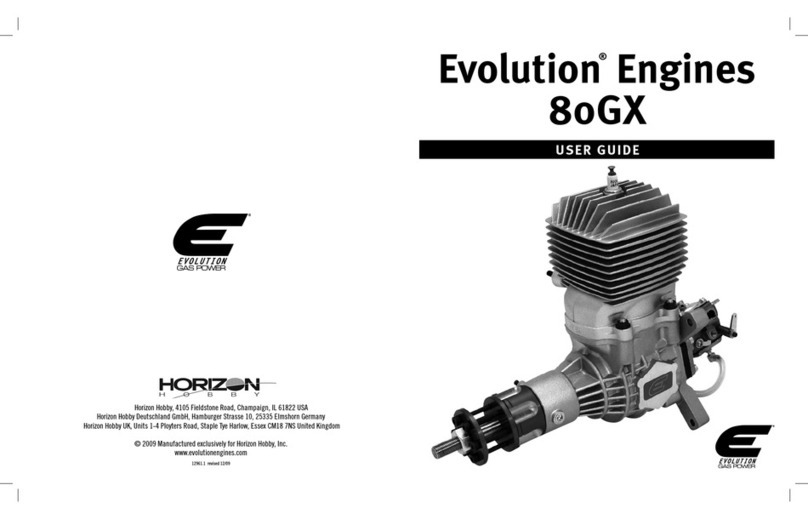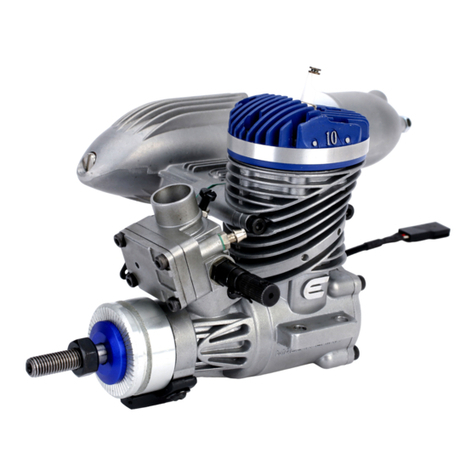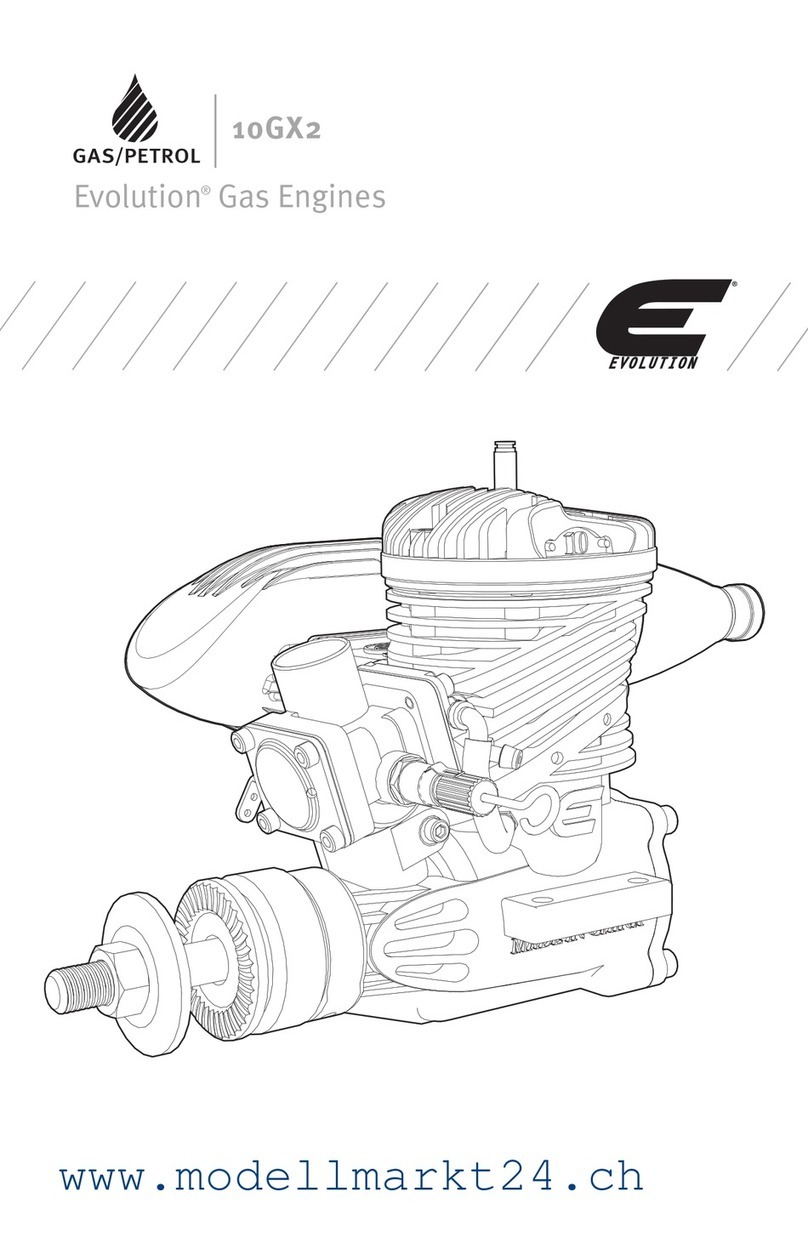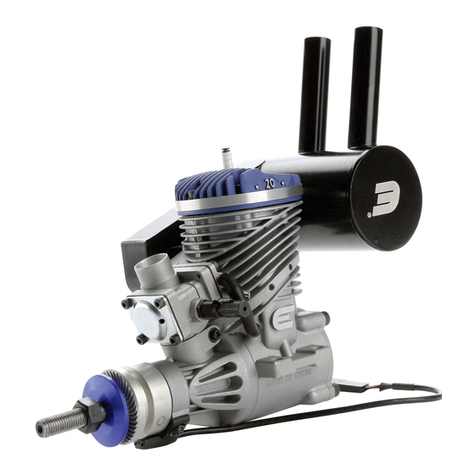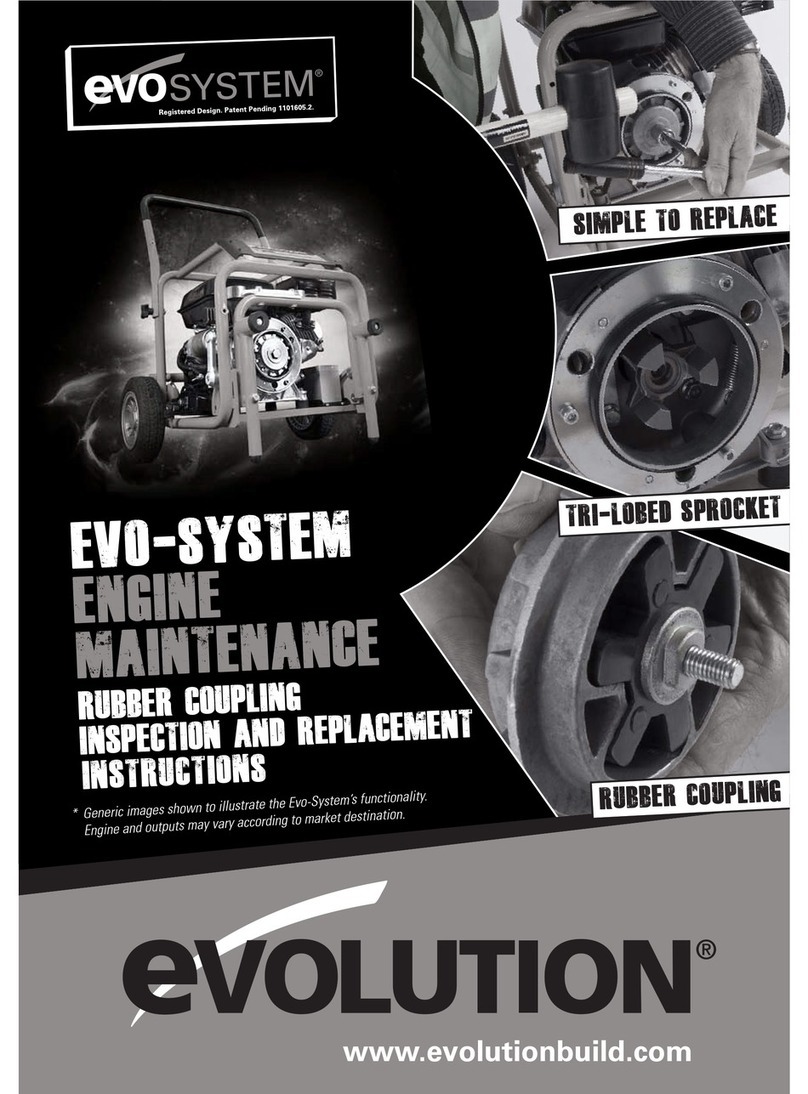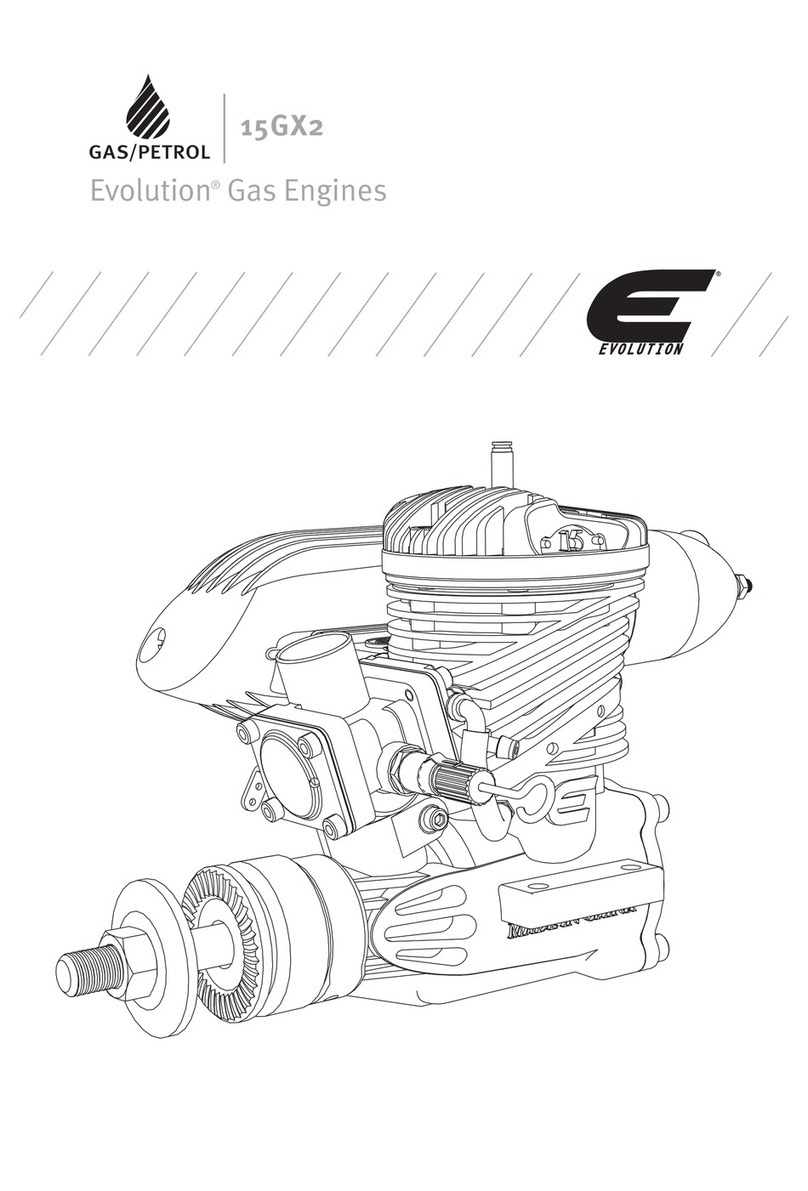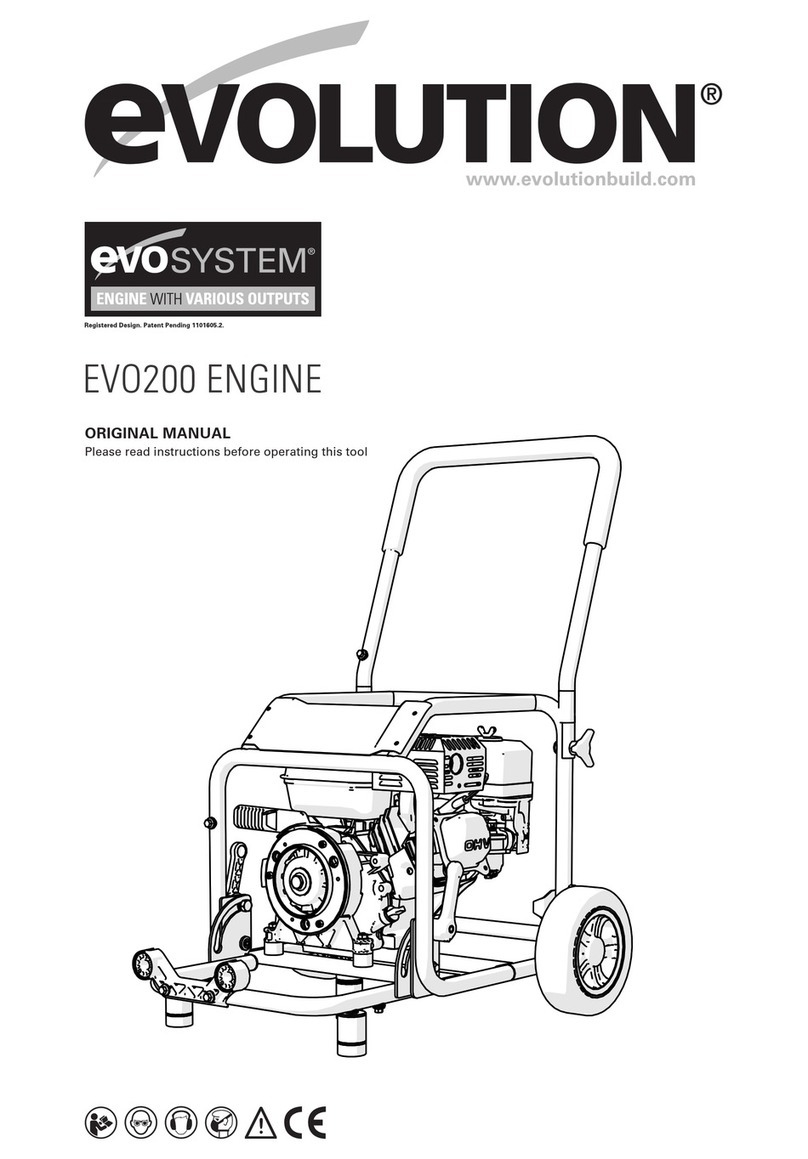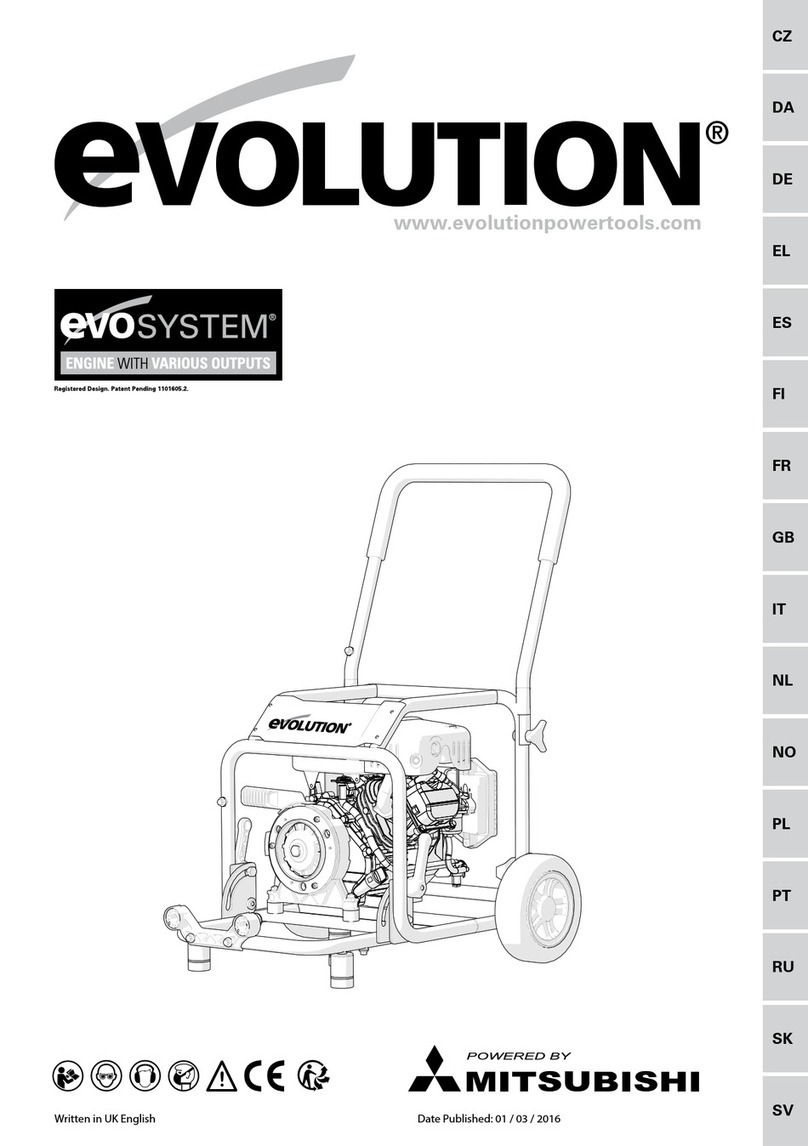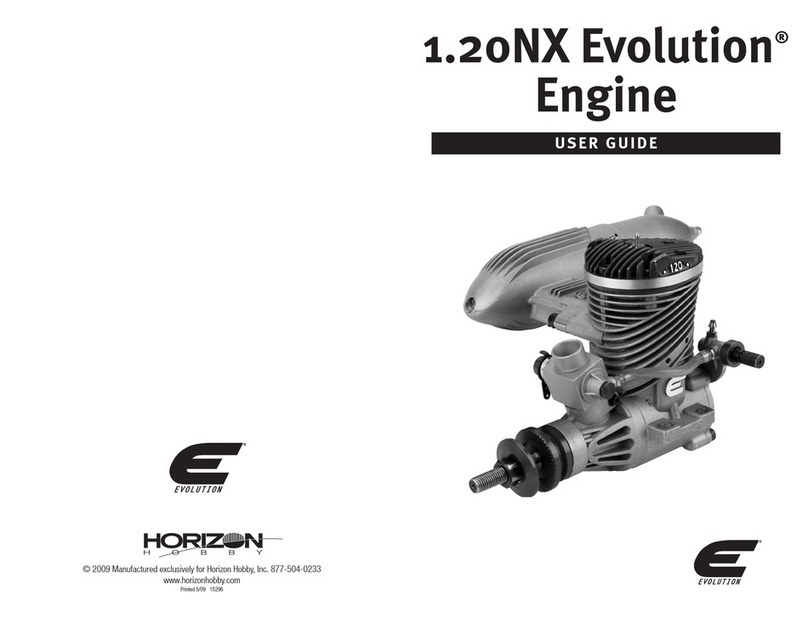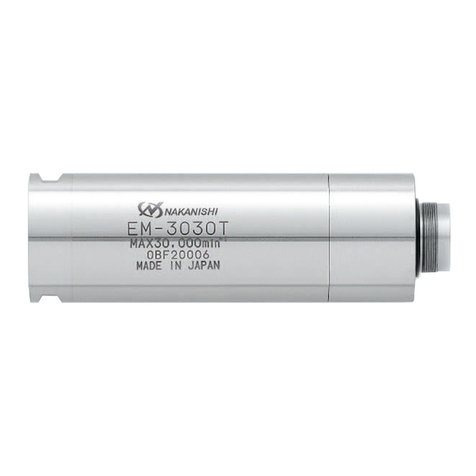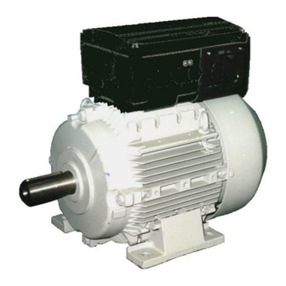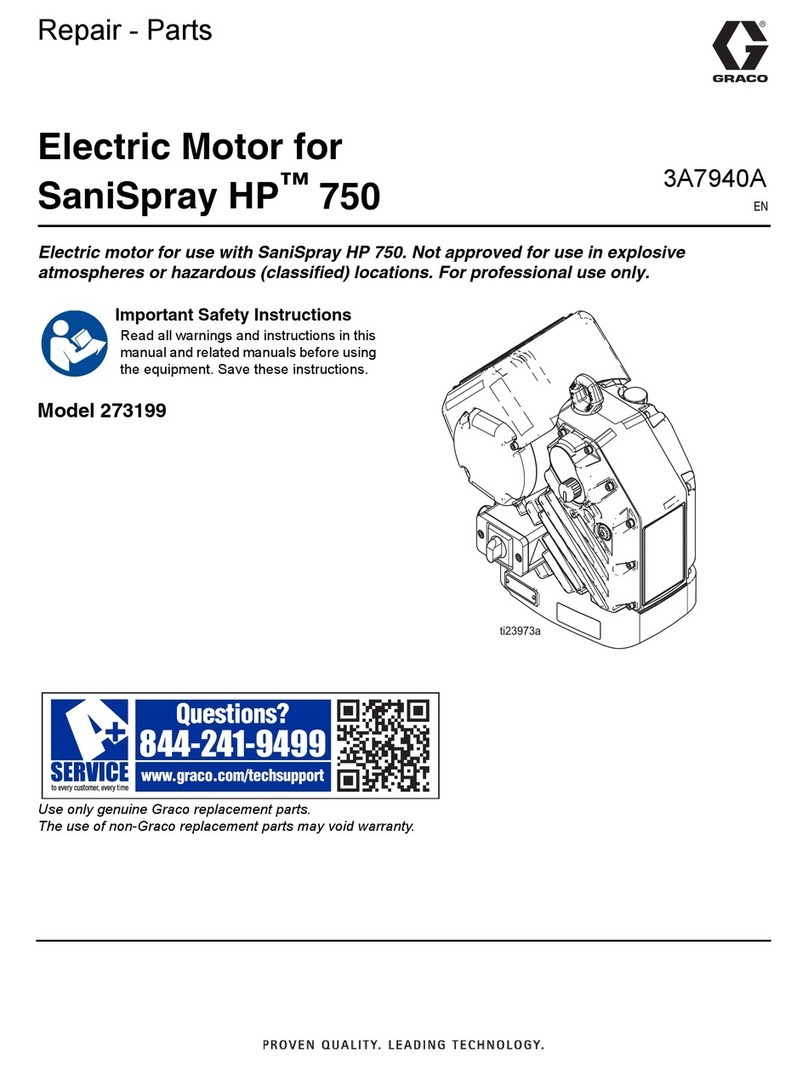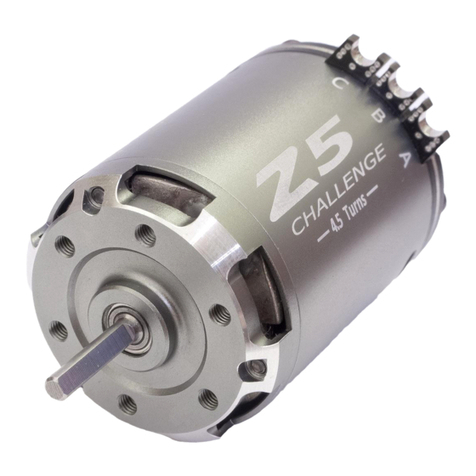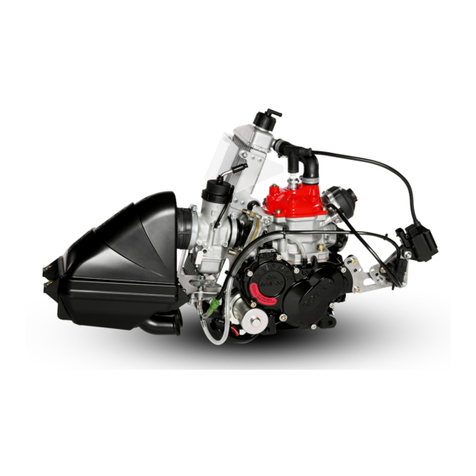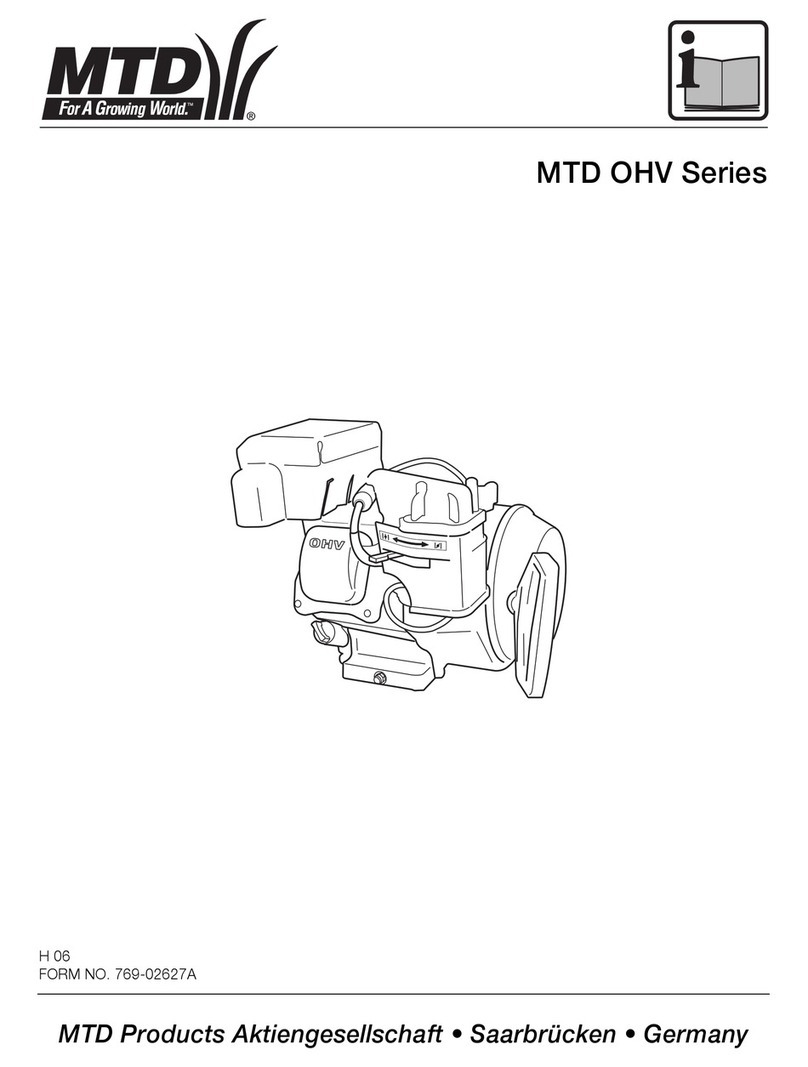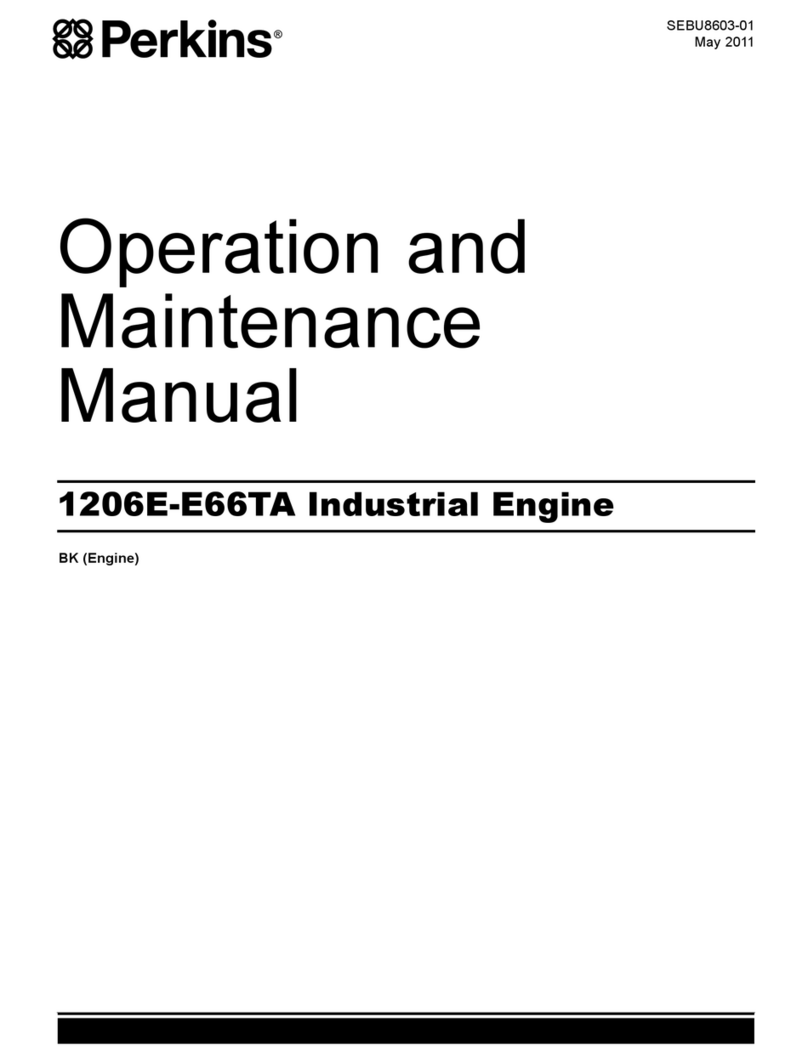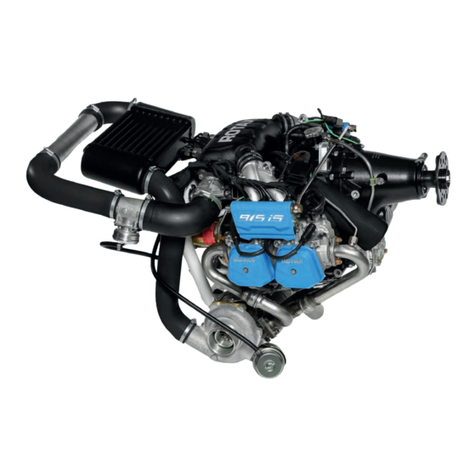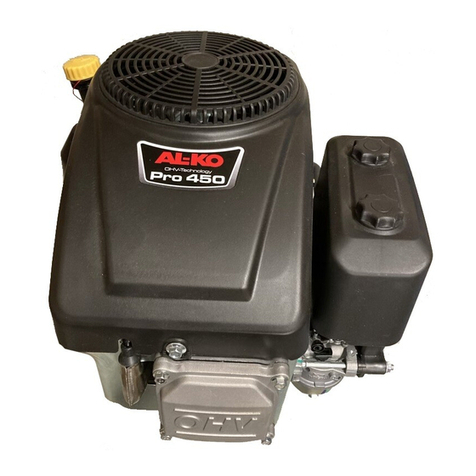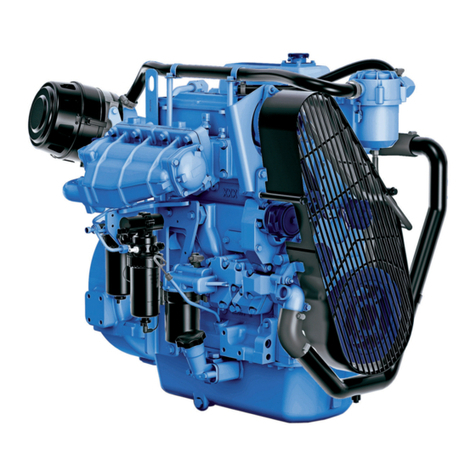Step 2. Low-Speed Needle Adjustment, cont.
4. The fuel mixture may be too lean if the engine
stops at the lowest idle position or it stops when
the throttle is rapidly opened from the idle position.
Correct this by rotating the SetRight™adjustment
bar counterclockwise in small increments until the
engine transitions smoothly without hesitation upon
opening the throttle rapidly from idle.
SetRight Needle Valves
The design of the SetRight needle valve system is such
that, during normal operating conditions, the typical
user will find that the range of adjustment allowed by
the system is more than adequate for most situations.
As a matter of fact, we intended this to be used as a
tool to identify operating problems. If you find that the
range of adjustment allowed by the SetRight needle is
inadequate after your initial period of running, then a
problem in your engine system has occurred. This might
be a bad glow plug, dirty or old fuel, an air leak in the
fuel system somewhere or any number of other reasons.
Do not make any permanent adjustment range changes
to the SetRight needle system if it was once working
correctly for you and now does not. Investigate other
problems first.
However, occasionally due to atmospheric, altitude or fuel
conditions, you may find that the range of adjustment
built into the SetRight needle valve system is inadequate
for your needs. These conditions are rare and easy to fix.
High-Speed SetRight Needle Valve Correction
Should the high-speed SetRight needle valve
need to be adjusted outside of the factory-
established parameters, simply pull out the
detent spring on the high-speed needle
assembly and move the needle valve in the
desired direction so the SetRight pin passes
the spring detent. You now have re-established
a new range for your purposes.
Low-Speed SetRight Needle Valve Correction
Should the low-speed SetRight needle valve
need to be adjusted outside the factory-
established parameters, follow these steps:
A. Loosen the setscrew found on the ring of
the SetRight assembly to which the
adjustment bar is attached.
Low-Speed SetRight Needle Valve Correction, cont.
B. Rotate the needle valve itself (small
slot-headed screw inside the blue ring of
the SetRight assembly) clockwise to lean
the mixture or counterclockwise to richen
the mixture as desired.
C. Retighten the setscrew on the ring of
the SetRight assembly and you have
re-established a new range of motion.
Why would fuel go “bad”?
The largest portion of the fuel is methanol (alcohol).
Methanol is hygroscopic; it attracts moisture. This can
cause your fuel to be contaminated with water, which will
cause poor engine performance. Additionally, the UV rays
in sunlight will eventually break down the nitromethane if
the fuel jug is stored in sunlight for long periods of time.
How can you tell when your fuel has gone “bad”?
The first indications will generally be the inability to start
the engines at previously run needle-valve settings.
Another clue might be that the engine has very poor idle,
runs but bogs down tremendously during run up and/or
will not attain the same rpms that you are used to.
-
How do I keep my fuel fresh?
If you have the opportunity, look for someone at a flying
field on a sunny day who has a jug of fuel that is only
1/4 full. What you may notice is that there are droplets
attached to the top and sides of the container. This is
the moisture in the air that is condensing inside the jug
because of the greenhouse effect of the semi-translucent
plastic jug. The only way to overcome the greenhouse
effect is to store your fuel in a metal can.
-
You can also combat the effects of the moisture in the air
by squeezing all the extra air from your fuel container at
the end of the day or transferring your fuel into smaller
containers as the level of the fuel is reduced in your
gallon jug. Many pilots will invest in 1/2 gallon or quart-
size containers and only bring that amount of fuel to the
field on any given day. This allows their main supply of
fuel to stay at home in a controlled storage environment,
virtually insuring problem-free fuel.
76
Step 5. Attach the glow driver.
Step 6. Turn the engine over using an electric starter.
The engine should fire within seconds of applying
the starter.
Step 7. Allow the engine to idle for 30 seconds. Adjust the
throttle trim if necessary to achieve a constant
slow idle.
Step 8. With the glow driver still attached and a helper
securely holding the airplane, advance the
throttle smoothly to full throttle. The engine will
transition to full rpm.
Step 9. Reduce the throttle to idle and remove the
glow driver.
Needle Limiters
In some conditions: Due to high altitudes, extreme
temperatures, etc., it may be necessary to slightly adjust
the idle and high-speed needle valves. The
high- and low-speed needles have limiters that prevent
over adjustment.
If your engine starts from the above procedure, but won’t
reliably continue to run with the glow driver removed,
follow the steps above right.
Step 1. High-Speed Needle Adjustment
With the engine running, advance the throttle
to full throttle while a helper securely holds your
airplane. Carefully pinch and release the fuel line
to temporarily restrict the fuel flow.
Caution: Do not reach over the propeller while
the engine is running.
Correct: If the high-speed needle adjustment
is correct, the engine will increase rpm slightly
(about 300 rpm) and then die.
Too Rich: If the engine increases a lot (1,000
rpm or greater), the high-speed needle is too rich
and must be leaned or turned clockwise.
Too Lean: If the engine doesn’t increase rpm and
simply dies, the high-speed needle is lean and
must be richened or turned counterclockwise.
Step 2. Low-Speed Needle Adjustment
The low-speed or idle needle valve, included with
the SetRight™ assembly, is preadjusted at the
factory for best performance. It may be necessary
to fine-tune the low-speed adjustment using the
following procedure:
1. Start the engine and let it warm up, prior
to attempting any adjustments. Make sure
that the high-speed adjustment process is
complete before attempting to adjust the
low-speed needle valve.
2. Close the throttle slowly. You will adjust the
low-speed needle setting by rotating the
SetRight adjustment bar clockwise to lean
the engine and counterclockwise to richen the
engine.
Caution: Do not attempt to adjust the low-speed
needle valve while the engine is running.
3. The fuel mixture should be adjusted as
follows: The fuel mixture is too rich if, when
opening the throttle rapidly, the engine emits
smoke and "stutters" or "stumbles." Correct
this by rotating the SetRight adjustment bar
clockwise in small increments. Continue this
process until the engine transitions smoothly
from low rpm idle to high rpm without hesitation
upon opening the throttle rapidly.
The needle valves come preset from the factory. Extreme
conditions may require some minor adjustments. Note that
the needle adjustment range is limited, preventing adjust-
ment beyond the practical range.
Low-Speed Needle AdjustmentHigh-Speed Needle Adjustment
